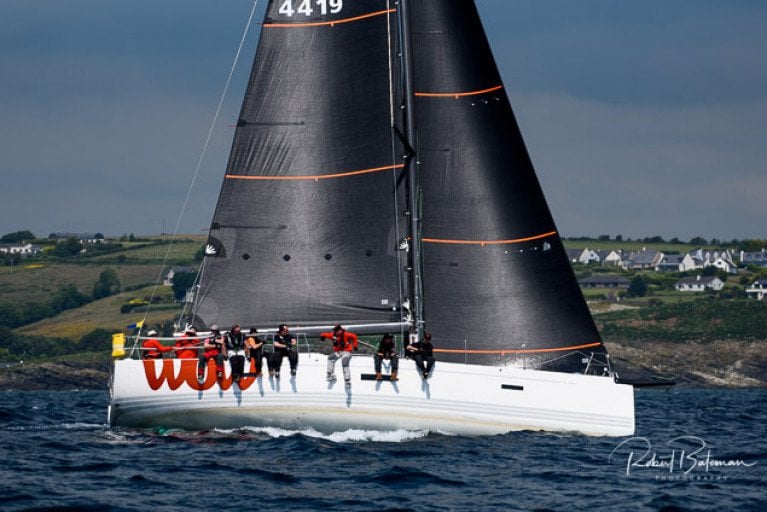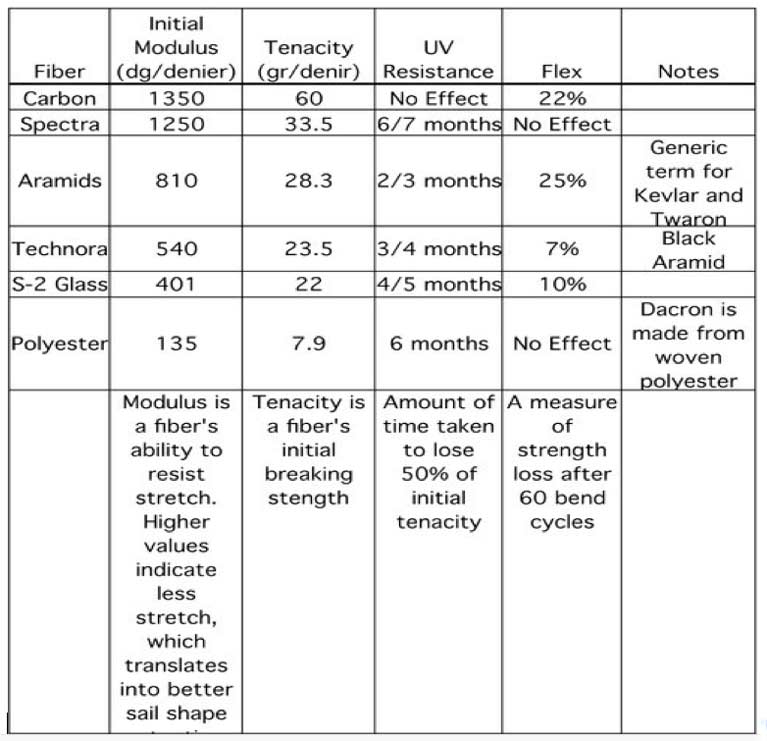Olympic sailor Mark Mansfield who is an agent for UK Sailmakers Ireland offers his five top tips for those looking at buying new sails this year.
1. Correct Size Sails
Make sure the new sails are the correct size. IRC rule changes are happening all the time and good advantages can be had from optimising the sail sizing, sometimes by just a small amount. Make sure you get advice from your sailmakers about what is best. We had one Class One boat this year that ended up with the same size sails as before but dropped two points by changing the shape of their sails a small amount.
 Black Velvet Beneteau 34.7 with her Uni Titanium Main and Headsail. Black Velvet recently converted to non-overlapping headsails
Black Velvet Beneteau 34.7 with her Uni Titanium Main and Headsail. Black Velvet recently converted to non-overlapping headsails
2. Seasonal Discounts
Make sure you take advantage of any discounts that might be available. Autumn is traditionally a quiet time for production facilities and so discounts are offered for orders at that time. At UK Sailmakers, we have just introduced a new discount arrangement. More details here
3. Sailmaker's Knowledge
Make the best use of your Sailmakers. People working with sailmakers have a wealth of knowledge about what makes boats go fast. Whether it is helping you with your rating optimisation, helping you tune your rig or other areas, make use of them. Sometimes this can be added as an included extra in a sails purchase deal.
4. Loft Facilities
Ensure the sailmakers you are thinking of has a proper loft to be able to service and adjust your sails. Ordering from a sailmaker with no proper loft facilities means adjustments or repairs are extremely difficult to organise. We recently had a customer who twisted his Code 0 cable and was unable to untwist it himself. It went down to our loft in Crosshaven where the 17-metre sail was hung up, untangled and refitted. This would be very difficult to achieve without proper facilities.
5. Sails to Suit Requirements
Make sure you are being quoted the material in the sails that suit your requirements and not some lower-tech and cheaper material that looks fancy but actually will stretch very quickly and not last long. For racing boats over 30 foot or even a bit smaller, the go-to material for quite a few years for low stretch is Carbon. The problem with not having Carbon in high load sails is if you exceed their normal wind range, they will eventually stretch, and once that has happened, you end up with turned in leeches and baggy sails. They will not last competitively for the same number of years as Carbon-reinforced sails.
 George Sisk's new X Yachts XP 44 Wow on way to winning the 2019 Sovereign's Cup with her Carbon Uni Titanium Main and Headsail Photo: Bob Bateman
George Sisk's new X Yachts XP 44 Wow on way to winning the 2019 Sovereign's Cup with her Carbon Uni Titanium Main and Headsail Photo: Bob Bateman
So, Why Carbon?
A quick history lesson on sail materials.
Up to the ’70s, nearly all sails were made from Dacron (Polyester) and were 'crosscut'. Fairly cheap, stretchy material, but lasted a long time.
In the late ’70s, new materials such as Mylar emerged with much less stretch and were used for quite a few years.
In the early ’80s, Kevlar became the go-to material. Originally used for bulletproof vests, it had good stretch resistance but was more expensive. The first Kevlar sail I ever sailed with was on Moonduster in 1981, her first year, when she did the Admiral's cup. Kevlar sails in those days were still crosscut.
In about 1982, tri-radial sails, using a combination of Mylar in the low stretch areas and Kevlar in the high stretch areas(such as the leech) changed the way sails were made forever. Kevlar, however, has low UV protection and stretches after a lot of flogging and wear.
In the early 2000s, Carbon was introduced to sails and this was another game-changer. Much less resistant to UV damage and significantly less stretch. It has become the option of choice for the racing community. It is more expensive, however, which is why some sailmakers when in a competitive situation, sell sails without Carbon.
At UK Sailmakers, our Race sails (X drive Carbon, Titanium and Uni Titanium) are all Carbon-reinforced sails. The latter two options are moulded sails.
The graph below shows the strength differences

If you are buying new sails, here is what you should be looking at:
- Fully Cruising - Dacron is fine
- Cruising and occasional races on Echo - Dacron is still fine
- Racing mainly and occasional cruising - Carbon-reinforced sails such as UK Sailmakers 'X drive Carbon'
- Racing mainly, club level - Carbon-reinforced sails such as 'X drive Carbon'




























































